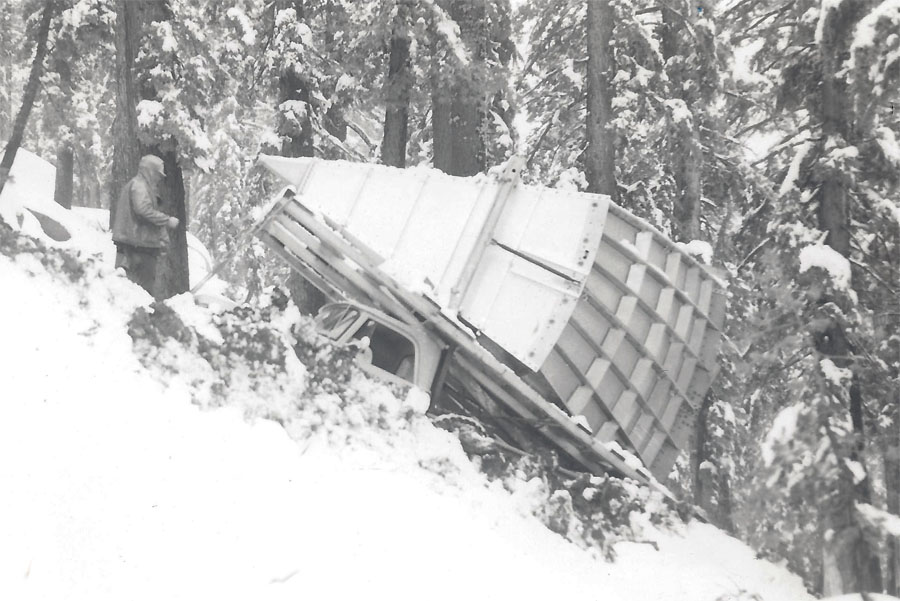Facing Lofty Challenges

Our construction company was no stranger to dangerous and intimidating worksites. After successfully completing a microwave-station job atop a remote mountain peak near Madras, we didn’t hesitate in 1959 to bid on another huge microwave-communications facility, a radio relay station for AT&T’s telephone service from New York to Los Angeles.
A few challenges were ahead of us when we began to prepare for building.
- The facility was to be built above Echo Summit Pass (on US Route 50 in California’s Sierra Nevada range).
- The summit was about 3,000 feet above the highway pass.
- There were no roads of any kind to reach the top.
- There were many environment restrictions.
Here’s how we did it:
Getting materials and people to the peak each day prompted me to purchase my first helicopter in 1960. It was only a three-place (three-seat) machine, but in the early sixties, helicopters were just then getting turbo-charged engines and the mechanical ability to fly as high as 9,500 feet. In fact, our machine, designated as a 47G3B1, was the first turbo-charged, three-place helicopter Bell ever built. I bought it slightly used, since it was the machine Bell Helicopters had used to get their type certificate from the FAA. It was also the only one available for sale. I paid $46,000 for it, which I thought was excessively high at the time. However we now pay over $3 million for a seven-place helicopter.
Eventually we recognized we simply could not avoid building a primitive road to the peak, since many objects, such as the huge antennas that were to go atop the completed facility, were too heavy for the helicopter and either too heavy or too clumsy for the cableway. The facility also had to have large diesel generators for producing power. Each of those weighed a ton or more. And we knew we would have to have a 15-ton mobile crane to pour concrete, lift structural steel, and other building materials, as well as lift major pieces of equipment into the building as it was being constructed. Clearly, there was no choice but to punch in a “pioneer road.”
But we needed permission to build such a road. After much discussion and many promises to AT&T and the US Forest Service not to cut any trees—along with our firm written commitment to restore everything back to the natural environment when we were done constructing the facility—we received permission. However, the cableway and helicopter were to remain as our primary transportation.
Those of us who built the road were proud of our accomplishment, but the terrain was so steep, rugged, and dangerous, only a handful of vehicles could negotiate the road. The incline was even too much for a Jeep to handle. Still, we did find a couple of rigs that could make it up and down. A commercial, four-wheel-drive Dodge truck was able to handle it, even with a load. We took film footage of the truck, loaded with radomes (weatherproof enclosures for microwave antenna), as it climbed up our billy-goat road.
Our success gave our young company bragging rights. The extreme job required all of us to use our imaginations, but we got the project done in record time. There were far too many unknowns, even with the best preplanning, so many changes had to be made in the contract. I am proud of the ingenuity we showed in getting this job accomplished and I’m proud of the great relationship we built with AT&T.
***
This is an excerpt from my new book, Detours to Destiny: A Memoir, available in Kindle and a version for all other e-readers. Now you can read the entire story to discover what happened after my detour over the Pacific Ocean. Watch for details about the paperback version soon to be released.
© 2018 Elling Halvorson. All rights reserved.